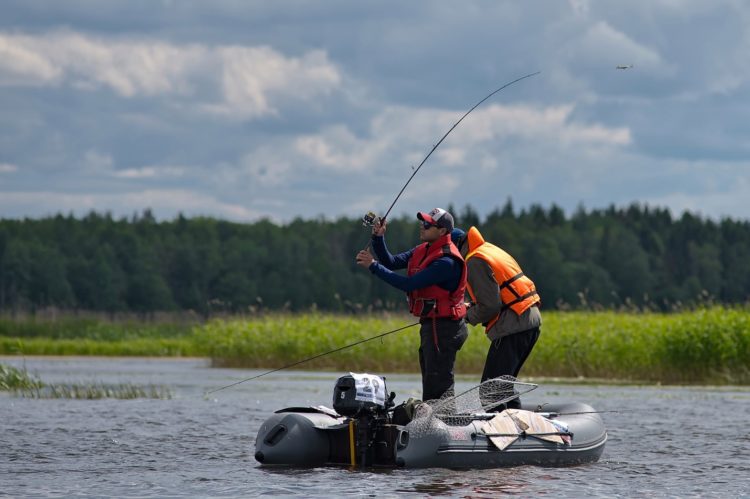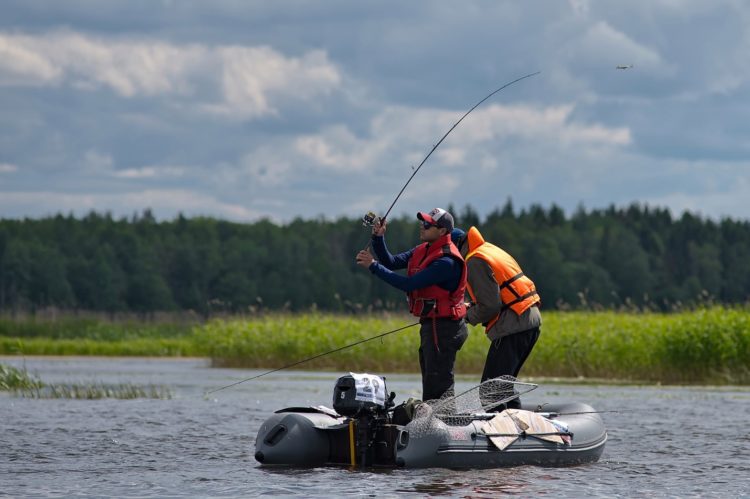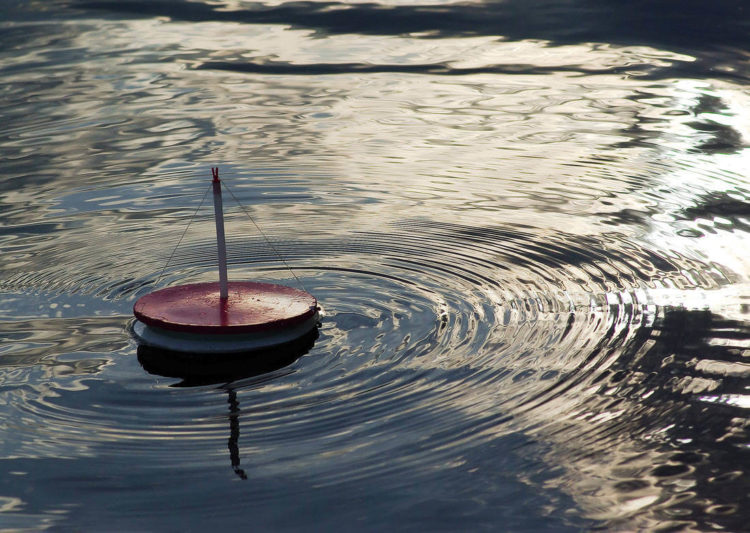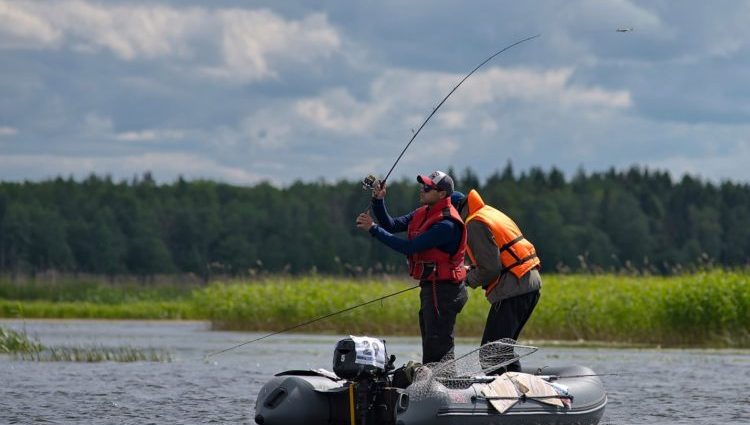Werrej
Pike is considered one of the most common predators that inhabit both flowing and stagnant water bodies. If fishermen go to the rivers during the period of no bite (backwoods, summer heat), then the lakes are considered the best place for fishing the rest of the time. Due to the rich food base of closed water bodies, pike in them reach large sizes and high numbers.
Where to look for pike on the lake
Many large lakes have a mixed topography, which means different zones with different depths, bottom structure and amount of vegetation. The pike occupies areas rich in shelter, oxygen and food supply. For a predator, the last component is especially important, therefore, in reservoirs with a small amount of food, fish can be caught in open areas.
Pike is an ambush predator that attacks prey sharply. She grabs the fish across, digs into the body with many teeth and in a few movements turns the fry with her head to her own esophagus.
Often, a predator gives itself away with breakers and splashes, but it is not easy to catch a pike that has just attacked its prey. It is worth paying attention to such places, but focusing on them, wasting a lot of time, is unnecessary.
Many anglers, when looking for a predator, start from the following rules:
- The depth in the fishing area should not exceed 3 m.
- The presence of plants and visible shelters is a mandatory attribute of a promising place;
- A fry walking near the surface, stains from a small fish – all this indicates a food base, not far from which a pike may be hiding.
- Fan casts help to check the water area faster.

Photo: 1fisherman.ru
Like it or not, it is easier and more interesting to catch active fish. Dynamic fishing attracts spinners, so most experienced anglers try to go through as many promising areas as possible in a day without casting them thoroughly. They make the result by the number of places covered, not by the quality of their research, believing that it is easier to find a feeding pike than to make a passive fish peck.
Where to look for a lake predator:
- fuq tisqija bil-ħaxix;
- in the upper reaches of reservoirs;
- not far from single shelters;
- in the windows of cattail, reed or duckweed;
- f'fond minn 0,5 sa 3 m.
Many lakes look like “saucers”. They are characterized by the absence of a coastal edge, the relief gradually deepens. It is impossible to look for a pike in such reservoirs according to the relief, the predator has nothing to catch on, so he chooses ambush sites according to other signs. Single plants, snags, branches sticking out of the water – all visible areas where pike can hide should be checked. Fan casts work when there are no visible promising areas. When a single bush, branches and other shelters catch your eye, the casting is done pointwise, a little further than the supposed fish stop, guiding the bait as close to the obstacle as possible.
How to catch a predator in lakes
The main tool for most anglers is spinning. With its help, you can quickly catch the water area, change baits and wires, get both small and large predators out of ambush.
Many lakes along the perimeter are overgrown with a dense wall of cattail and it is problematic to approach the water along the shore. Also, there is often little water near the coastal zone, and the depth may not exceed half a meter. Overgrown shores and shallow depth suggest the use of a boat. The floating craft allows you to carefully approach absolutely any places. Narrow-nosed boats make it possible to wade through the cattail, if different parts of the lake are separated by such an obstacle.
Spinning għal lizz
For fishing on the lake, rather short forms with a small test are selected. The fact is that working with a long fishing rod in a boat is uncomfortable, especially when there are two or more people on board. The optimal length is 200-210 cm. Long casts in lake conditions are not required, however, it becomes necessary to feed the bait from under you, which a short spinning does an excellent job of.
A small test allows you to work at shallow depths. Some anglers focus on larger lures, using more powerful rods. Powerful spinning allows you to pull fish out of “difficult” places, such as windows in reeds or snags. A powerful blank in the arsenal will not hurt, even if the main spinning is a “stick” with a test of 3-18 g or 5-25 g.
Effective baits on lakes:
- rockers not engaging;
- edible silicone on an offset hook;
- wobblers with a small depth;
- poppers, walkers, imitation ducklings and frogs.
Even if fishing is carried out in the spring, it is very convenient to use non-hooks. They can be carried out in the most “strong” places where you cannot throw the usual bait. It is worth remembering that an effective non-catching lure has a single hook. Tees, even with antennae on each sting, work worse, collecting three times more debris.
Oscillations with a non-hooking hook are used in the spring. On bright sunny days, anglers prefer the same colorful hues. In cloudy weather, metallic colors work great. For pike fishing, it is recommended to select the shape of the spinner relative to its food base. If the lake is represented by a large number of broad-bodied fish, such as crucian carp, wide “gliders” fly into battle. If the main food for pike is bleak or roach, narrow-bodied models come to the fore.

Ritratt: s-fishing.pro
Edible silicone, depending on the size and color, can be used during the entire open water period. In spring, transparent light shades are recommended, in summer – a bright palette, in autumn – natural coloring. For pike fishing, active baits are used: twisters, vibrotails, crayfish with playing claws on a monotonous wiring.
Regardless of the type of bait used, anglers use several basic techniques: monotonous broach at minimum speed, twitching, Stop’n’Go. Pike are classified as predators that respond better to slow animation, but active fish are perfectly caught with the help of twitching.
Near-surface wobblers are the best artificial bait for fishing in the summer. They are perfectly visible from afar, they have an amplitude game and attract even a passive predator. With the help of a wobbler, both professionals and beginners can catch, because this bait does everything on its own, it is enough to feed it and perform a uniform broach at low speed. In spring and summer, small models of bright colors are recommended; in autumn, products of dark colors and up to 130 mm long will be the best choice.
Poppers, walkers, artificial frogs and mice are a special type of bait used in the most overgrown areas. Hooks of such baits are often on top. If poppers can be carried out in areas with open water clearance up to 10 cm, then frogs, ducks and mice should be led directly over obstacles, such as duckweed. Small jerks with pauses will attract the predator, and she will attack the bait from below. The beauty of fishing with surface lures is that pike attacks take place in front of the angler, fishing comes out spectacular and dynamic.
Fishing with circles
During permitted navigation, you can sail on a boat and place stationary tackle on a predator. A circle is a summer analogue of an under-ice vent, which is so popular in the winter season. With the help of a circle, you can lure out the most passive and not hungry pike.
The design of the mug consists of several elements:
- a foam disc with a reel from the side;
- plastic pin with a foam ball;
- wound equipment from a sinker, a leash and a hook;
- additional fishing line for attaching to a bush.
Circles can be stationary and free. In the first case, the tackle is tied next to some cattail bush, snag or branch. A stationary circle is made on the course so that the flow of water does not carry the tackle from the promising zone. Fishing on the lake involves the arrangement of circles that will swim freely, looking for a predator. It is worth saying that on shallow lakes with a large number of shelters, tackle is more effective than in a river.
Traditionally, the tackle is painted in two colors: white and red. Red, as a rule, is located on the top of the disk, white – on the underside. A cut is made on the body, for which a fishing line is attached, fixed at a certain depth of the snap. When biting, the pike turns the circle with the white side up, and the fishing line slips out of the slot, freely etching its entire length. Usually, anglers wind up fishing lines in such a quantity that it exceeds the maximum depth of the reservoir by 5-6 m. The bite is clearly visible on the water surface, especially if the lake is located inside the forest. On a green background, a white moving spot is clearly visible from afar.

Ritratt: manrule.ru
It is necessary to swim up to the triggered mug carefully so that the pike does not let go of the prey or swim away with the tackle. If you do everything noisily, then it will be difficult to catch the circle. Excessively short line on the circle will also make it difficult to catch a white disc.
Mugs, like vents, can be arranged in the amount of 5 pieces per angler. They are caught during the period when the spawning ban is not in effect and water navigation is open. It is impossible to fish with circles from the shore; a boat is needed to place and remove them.
Equipment may vary. Some anglers use metal leaders, others use fluorocarbon. Single hooks collect vegetation less, which is important when catching pike in the summer.
The live bait should be set above all obstacles so that it is always in sight of the predator and does not hide in the mud. They pass the live bait behind the back or upper lip. Carp, rudd, roach serve as bait. In waters rich in perch, “striped” should be used.
The girders are arranged in several ways:
- a straight line along the reeds;
- in a checkerboard pattern in shallow waters;
- near each obstacle;
- in windows made of duckweed or cattail;
- at the exits from bays, in constrictions;
- along fallen trees.
For fishing on a circle, you will need a pickup and unhook. Pike often leads tackle into reeds, snags or cattail wall, however, shallow depth and the presence of a boat play into the hands of the angler.
In the course of fishing, the arrangement of circles should be changed. If the pike has not shown itself in an hour of fishing, then the gear is moved to the next promising zone. In this case, you can change not only the position of the circle, but also the depth at which the live bait is located. Live bait fishing is possible both in calm weather and in the wind. However, air masses should not exceed a speed of 5 m / s, otherwise the resulting waves will throw gear, carry circles too quickly. It is best to choose the weather without wind.










